Are you interested in watching an original J. Manton flintlock in slow motion? How about a wheel lock? BlackPowderMag was able to do just that at Friendship this spring. With help from blackpowder riflemaker, David Price, and Grant Ferguson from Olympus, we filmed 30+ flintlocks at 5000 frames/second.
History was made at Gun Makers’ Hall during the Spring Nationals at Friendship this year. Blackpowdermag.com and Olympus Industrial collaborated on a slow motion project. Grant Ferguson from Olympus set up a digital video camera capable of 33,000 frames /second under the pavilion behind Gun Makers’ Hall. The goal was to tape as many flintlocks as we could, furnish the shooter with a CD copy, and give the NMLRA a copy of all our work. In all, we were able to give 33 different digital files to the NMLRA.
David Price has just fired a flintlock for the camera.
The background behind this project started back in the fall of 2006. In a phone conversation, Grant Ferguson and I first discussed the possibility of taping both locks and the firing of a rifle. After a number of conversations we agreed that it might be helpful to try this by ourselves instead of having onlookers present. If we failed, we would rather not have an audience.
In January of 2007 Grant brought his equipment to northern Indiana, and we had our first try in my garage. By juggling a couple antique cars around, we had a heated space to work. During this time we taped a large Siler that has been the subject of many experiments over the past 20 years. We digitally recorded this lock in a number of “flint/bevel/priming powder” combinations. The lock even got a chance to perform up-side-down. Besides taping another lock with no frizzen spring, we recorded a flint rifle from the front so we could see lock ignition, vent hole ignition, and the ball exiting the rifle. (Just in case you wondered, a years’ worth of “Guns and Ammo” duct-taped together makes a good bullet stop for a limited number of tries. Dixie Gun Works catalogs aren’t bad either. — Remember, don’t try this at home.)
Grant Ferguson, Olympus Industrial, is shown working with the camera interface.
Armed with the knowledge gained from this experience, I contacted Barbie Chambers, Dick Miller, and Roland Martin to get their take on the project. With their approval we looked for a date during the Spring Shoot. Barbie Chambers is the events planner for the Hall, and we soon had our date. As the time approached, I found a number of gun makers and ML fans willing to help. David Price, maker of the swivel breech raffle rifle, deserves much praise for his assistance. He volunteered to help me out, and as we were about to start, I mentioned that I hoped to use the same priming powder for all locks. David’s reply was, “I think the same person should prime all the locks too.” And he did just that. It allowed me to burn disks for the shooters and line up the next lock to record.
David Price (center) discusses the project with observers.
As we worked, the number of shooters grew and kept us busy most of the day. At one point Barbie came by with four locks from the Chambers booth. One was an original J. Manton from a fine smooth bore double. That had to be a highlight. Another was a wheellock. Leon Buckwalter’s lock is the only wheellock ever taped in slow motion – at least this slow. The frame speed we used for all locks was 5000 frames/second. At this speed it takes perhaps a minute to show the complete ignition sequence. An even faster frame rate could have been used, but the size of the screen would have been reduced. We felt this was a good compromise.
Leon Buckwalter prepares his wheel lock.
From my experimenter’s point of view this was a great day. We gathered a wealth of material from which to draw data, and I think we proved that this media could be used to improve lock function. Another experimenter feels the same way. Lowell Gard of “Bevel Bros.” fame asked if we could video his lock with varying numbers of trials on the flint. He wanted to see if we could see the flint deteriorate as the trials increased. We started with a new flint and worked up to 50+ trials.
All in all, it was a great day for students of the flintlock. I believe every lock owner received a working video of his locks. The NMLRA received them all. Lowell offered to place a few CDs at the Bevel Bros. booth if shooters were interested in purchasing the complete set. We may give that a shot this fall.
Patch box side of David Prices’s swivel breech rifle. This superb piece will be raffled in the fall..
I chose to include slow motion videos of the J. Manton and the Buckwalter wheel lock. The Manton locks from the late flint period are, in my opinion, the finest locks made. The wheel lock is included because I don’t think one has ever been photographed at this speed.
I wish to thank Grant Ferguson for his effort in this project. Without his camera and special abilities, we certainly could not have attempted this. Grant, I hope we get a chance to work together again. David Price worked all day long with me, and I appreciate his help. I also thank him for the opportunity to handle his beautiful swivel breech. Thanks also to Barbie Chambers and Dick Miller for allowing us to work at Gun Makers’ Hall. And last of all, a thank you to all the shooters who brought locks for us to record. I appreciate your willingness to share your lock with us.

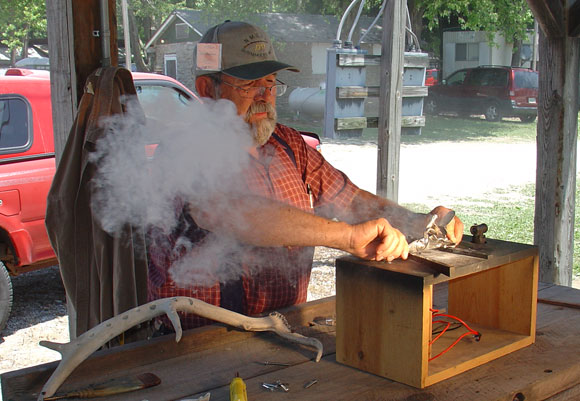
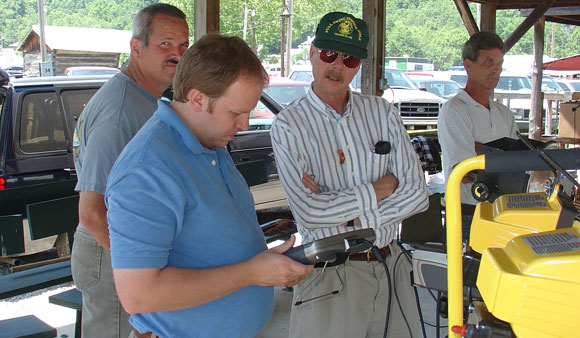
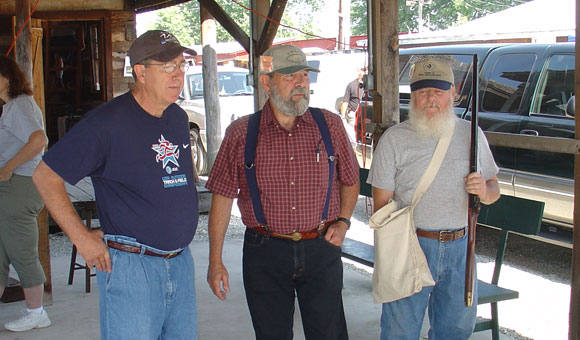
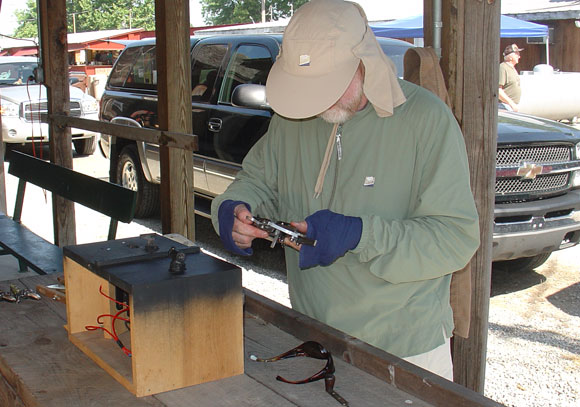
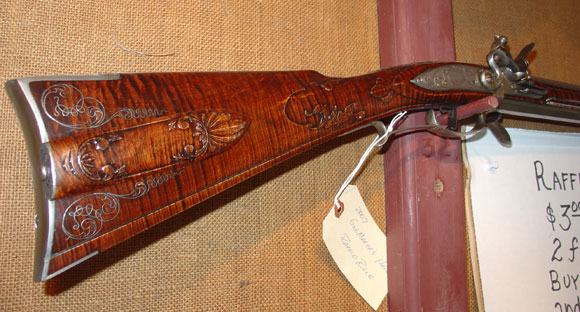
Leave a Reply
You must be logged in to post a comment.